Imagine owning a piece of history that not only tells time but also showcases exceptional craftsmanship and artistry. Rare antique clocks have captivated collectors for centuries, representing a unique blend of functionality and beauty.
You might be surprised to learn that some of these timepieces are highly valued for their historical significance, intricate designs, and the horological mastery they embody. As we explore the world of antique clocks, you’ll discover what makes certain pieces particularly rare and desirable.
Key Takeaways
- Discover the unique characteristics that make certain antique clocks highly valuable.
- Learn about the historical significance and craftsmanship behind these timepieces.
- Understand why these clocks are considered works of art and highly sought after.
- Explore the top 10 rare antique clocks that showcase exceptional horological craftsmanship.
- Find out why these particular clocks stand out among thousands of antique timepieces.
The Timeless Appeal of Antique Clocks
As a collector, you’re likely drawn to the unique charm and historical significance of antique clocks. These magnificent timepieces are not just functional; they are statement pieces that add elegance and character to any room.

Antique clocks continue to fascinate collectors and homeowners alike, serving as both functional objects and stunning decorative elements. You can explore various types of antique clocks, each with its own history and craftsmanship, by visiting The Handmade Store, which offers a diverse collection of these timeless pieces.
| Aspect | Description |
|---|---|
| Historical Significance | Antique clocks reflect the technological innovations of their time and often served as status symbols. |
| Craftsmanship | The attention to detail in antique clocks represents a level of artistry rarely found in modern mass-produced items. |
| Investment Potential | Starting a collection of antique timepieces can be both a rewarding hobby and a sound investment strategy. |
“The mechanical ingenuity of antique clocks continues to impress even in our digital age, making them cherished heirlooms for generations to come.”
In conclusion, the appeal of antique clocks lies in their timeless style, historical significance, and the artistry that goes into their creation. Whether you’re a seasoned collector or just starting your collection, these timepieces are sure to bring joy and elegance to your home.
What Makes a Clock “Antique” and “Rare”?
The classification of a clock as “antique” and “rare” is not just about its appearance, but its history and craftsmanship. An object qualifies as an antique if it is over 100 years old, a criterion that is often overlooked in the search for valuable items.
When evaluating clocks, it’s essential to understand the distinction between “antique” and “vintage” designations. While “antique” refers to items over 100 years old, “vintage” typically describes items between 20-100 years old.

Several factors contribute to a clock’s rarity, including limited production numbers, historical significance, and survival rate. The provenance, condition, and original components of a clock also significantly impact its value and desirability.
| Factor | Impact on Rarity | Impact on Value |
|---|---|---|
| Limited Production | High | Significant |
| Historical Significance | High | Significant |
| Survival Rate | Moderate | Moderate |
| Provenance | Moderate | High |
| Condition and Original Components | Moderate | High |
In conclusion, a clock’s status as both antique and rare is determined by a combination of its age, craftsmanship, condition, and provenance, making some clocks truly unique and valuable collector’s items.
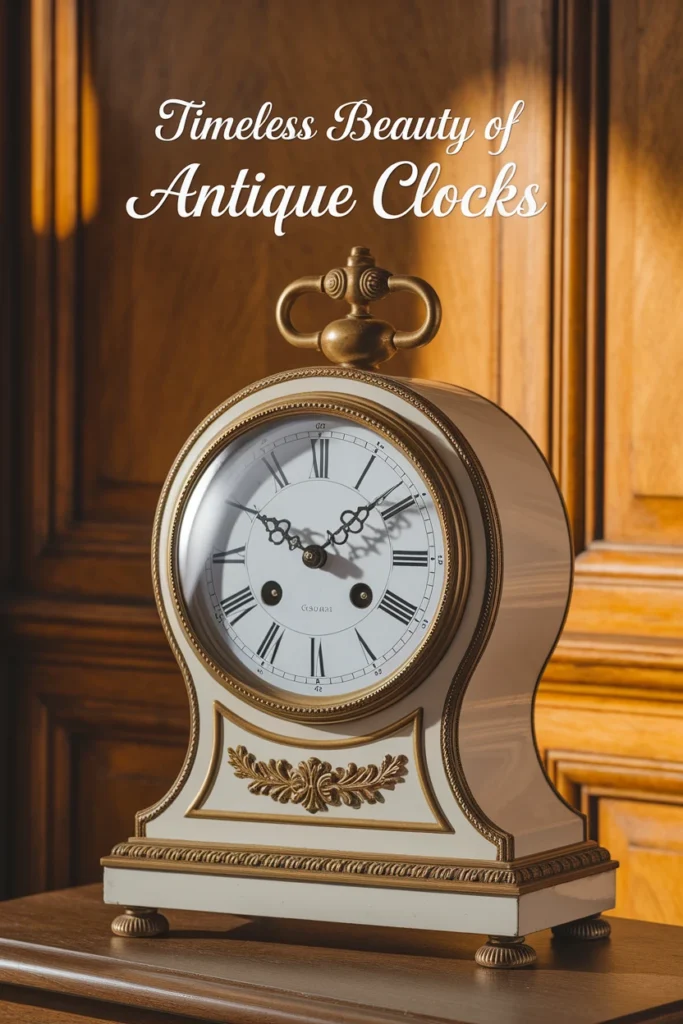
How to Identify Valuable Antique Clocks
To determine the value of an antique clock, you must examine its craftsmanship, design, and provenance. A well-crafted clock with intricate details and mechanics is often a sign of its age and period. When assessing an inherited or purchased clock, look for maker’s marks, serial numbers, and distinctive design elements that can help identify its origin and authenticity.
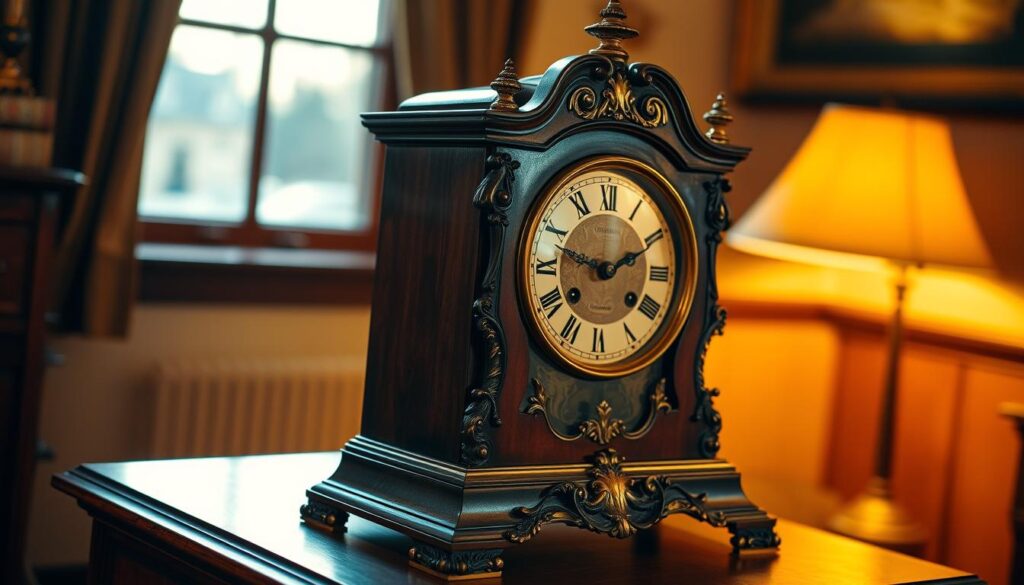
value and those expected with age. Researching the clock’s history can also increase its worth. Certain clockmakers’ names are associated with higher value in the antique market. Understanding the internal mechanism can reveal more about the clock’s age and value than external appearances.
- Examine the clock’s case style, dial design, and movement characteristics to identify its period.
- Assess the condition and recognize which flaws significantly impact value.
The Best Rare Antique Clock Collections in the World
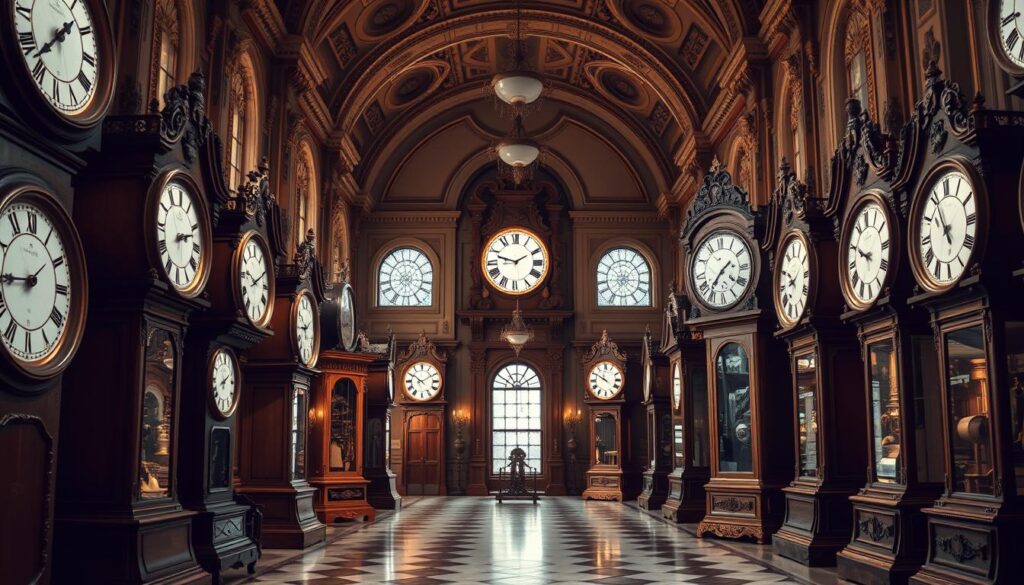
If you’re passionate about horology, you’ll want to explore the world’s top museums and private collections that showcase the finest rare antique clocks. These institutions are treasure troves for collectors and enthusiasts, offering a glimpse into the rich history of timekeeping.
The British Museum’s Horological Collection is one of the most significant, featuring timepieces that span several centuries. This collection is a must-see for anyone interested in the evolution of clockmaking.
Another notable institution is the Patek Philippe Museum in Geneva, Switzerland. While it’s known for showcasing the brand’s masterpieces, it also features rare antique pieces from other makers, making it a comprehensive resource for horology enthusiasts.
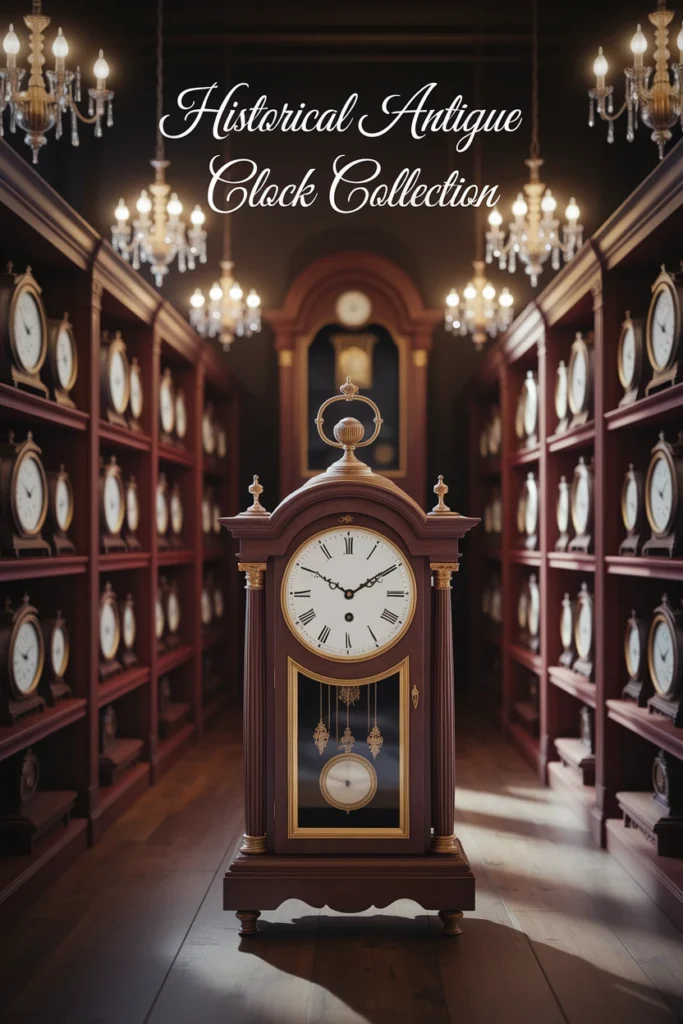
In the United States, the National Watch and Clock Museum in Columbia, Pennsylvania, is considered a mecca for clock collectors. It houses an extensive collection that demonstrates the development of timekeeping technology.
The Science Museum in London is another key destination, preserving and displaying rare antique timepieces that highlight the advancements in horology.
For those interested in American clockmaking, the Willard House & Clock Museum is a significant site, housing the largest collection of Willard clocks, which are among America’s most important clockmaking contributions.
These world-class collections serve as valuable resources for researchers, collectors, and anyone interested in horological history, providing insights into the craftsmanship and innovation that have shaped the world of antique clocks.
Floating Diamond Mystery Clock
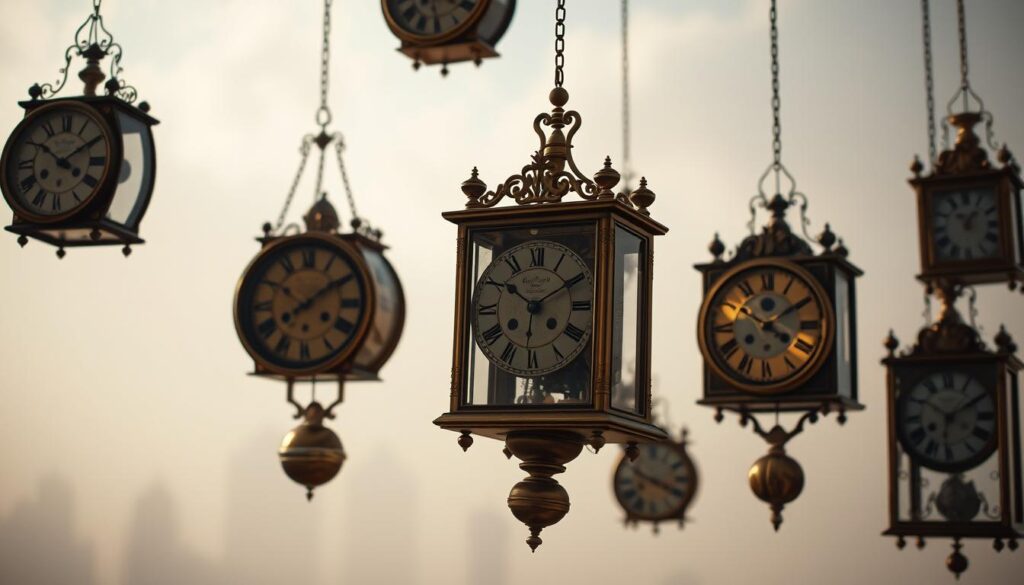
As one of the most intriguing rare antique clocks, the Floating Diamond Mystery Clock continues to baffle and fascinate clock enthusiasts worldwide. Valued at approximately $585,000, this extraordinary timepiece is a masterpiece that combines intricate mechanics with exquisite art.
The Mechanics Behind the Mystery
The Floating Diamond Mystery Clock creates an illusion that its hands float without any visible means of support, thanks to its ingenious mechanical principles. This includes the use of hidden gears and transparent crystal components that have captivated observers for generations.
Current Value and Rarity
The limited production numbers of the Floating Diamond Mystery Clock contribute to its extreme rarity and high valuation in today’s collector’s market. As a rare antique clock, it represents the height of luxury and technological innovation, particularly popular during the Art Deco period.
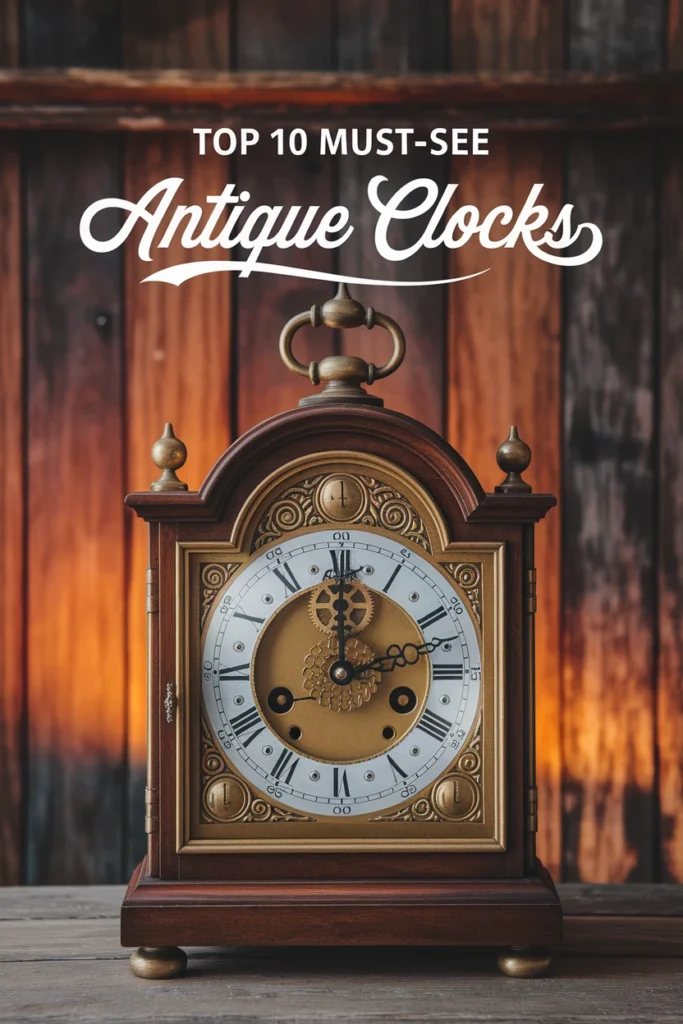
You can appreciate the Floating Diamond Mystery Clock not just as a timekeeping device but as a true work of art that combines horology with jewelry design. Its value lies in the combination of precious materials, mechanical ingenuity, and artistic design, making it one of the most sought-after clocks among collectors.
Month-Going Regulator Clock by Deshays à Paris
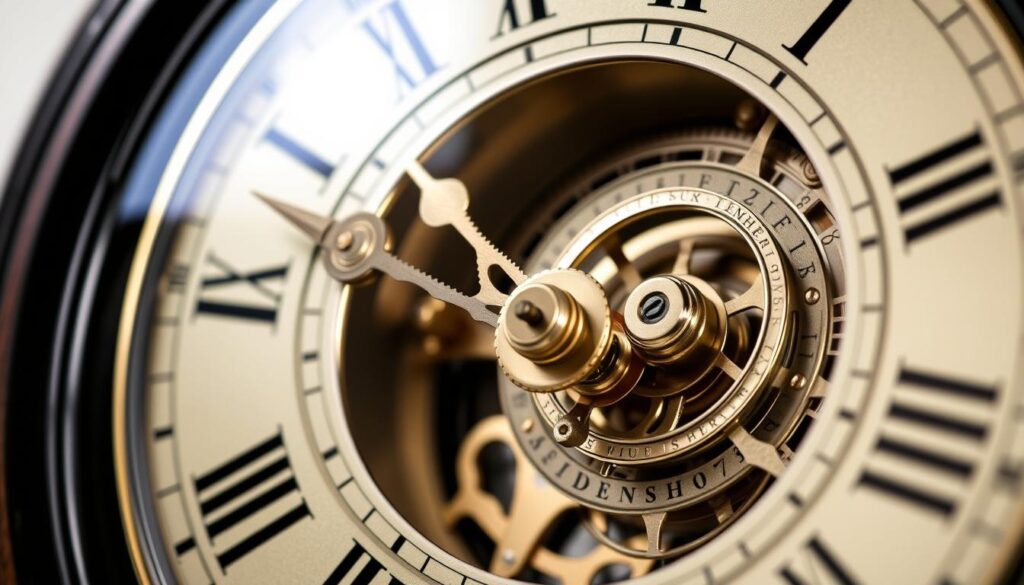
The Month-Going Regulator Clock by Deshays à Paris is a masterpiece that showcases the pinnacle of 19th-century French clockmaking. Valued at approximately $248,500, this antique clock is not only a testament to the horological innovations of its time but also a highly sought-after collector’s item.
Historical Significance
This clock’s historical significance lies in its role as a “regulator” clock, used as a standard for setting other clocks in the 19th century. The precision and reliability of such clocks were paramount, making the Month-Going Regulator Clock a crucial tool for timekeeping.
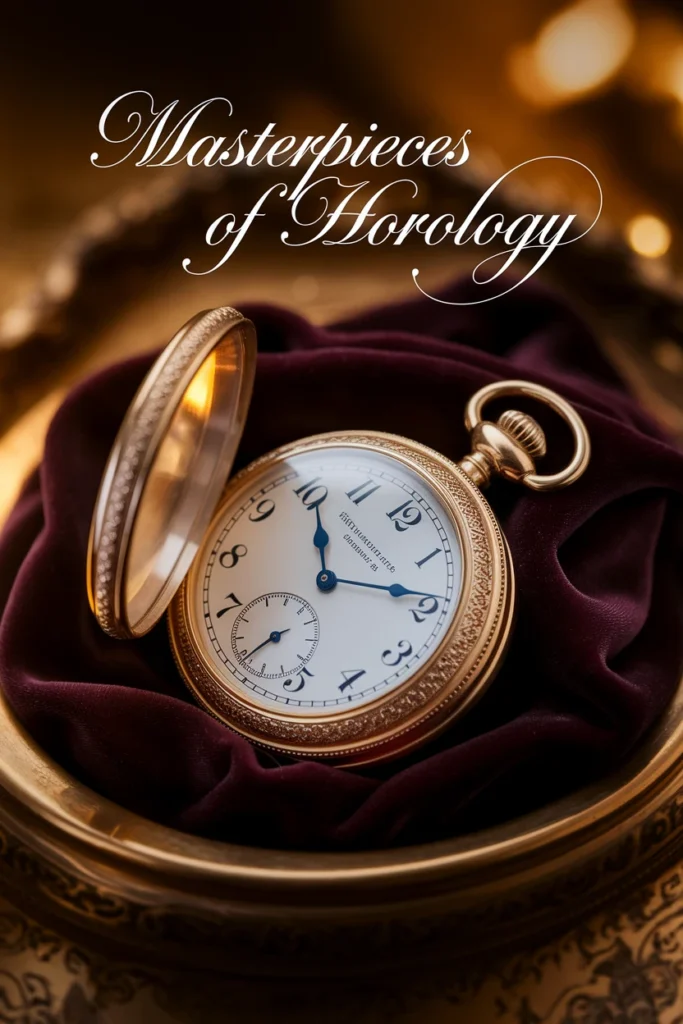
Distinguishing Features
The distinguishing features of this clock include its precision pendulum, specialized escapement, and elegant case design. The month-going feature allowed the clock to run for an entire month on a single winding, showcasing the advanced techniques of 19th-century clockmakers. The combination of technical precision and artistic craftsmanship makes this regulator clock particularly valuable to collectors.
Paris LeCoultre La Serpente
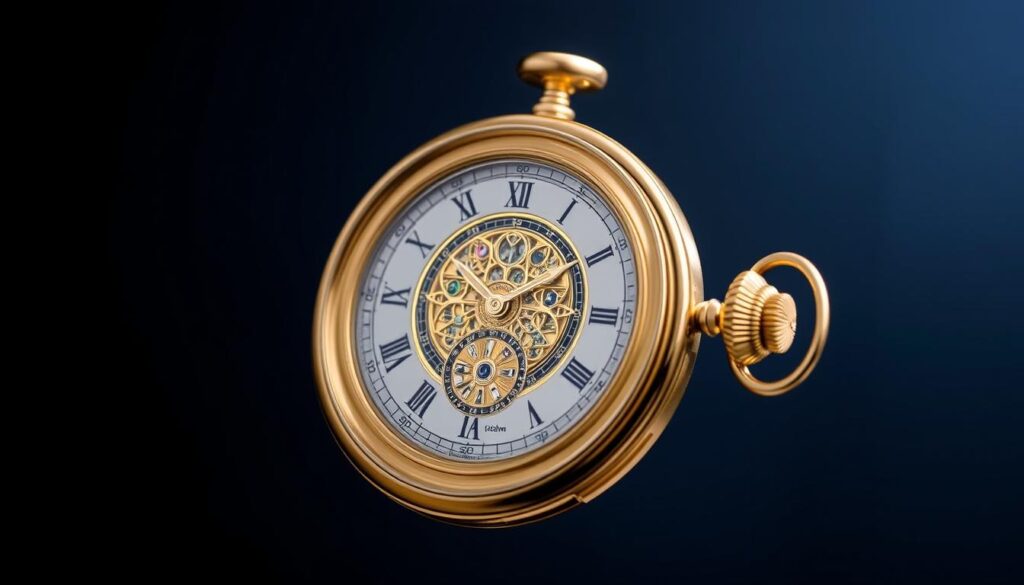
You can appreciate the intricate details of the Paris LeCoultre La Serpente, a true marvel of craftsmanship. This rare antique timepiece is renowned for its exquisite 18K gold case and 40mm sapphire crystal face, making it one of the most coveted watches among collectors.
The Paris LeCoultre La Serpente Super Complication is considered one of the rarest pocket watch movements in the world. With its complex mechanics and limited production, this timepiece commands a high value, retailing between £22,000-£33,000. The “Super Complication” designation signifies the watch’s mechanical complexity and horological significance, reflecting the masterful craftsmanship that LeCoultre is famous for.
The Craftsmanship of LeCoultre
LeCoultre’s craftsmanship is evident in the precision engineering and intricate details of the La Serpente. The use of precious materials, such as 18K gold, and the innovative mechanical design contribute to its extraordinary value. The La Serpente is not just a beautiful object but a testament to the art of watchmaking.

Investment Value
Serious collectors consider the Paris LeCoultre La Serpente a sound investment that appreciates over time. The combination of its rarity, mechanical innovation, and the brand’s reputation makes it a valuable addition to any collection. To authenticate a genuine LeCoultre piece, one must look for specific details, such as the quality of craftsmanship and the presence of hallmarks or signatures.
French Louis XVI-Style Ormolu Striking Mantel Clock
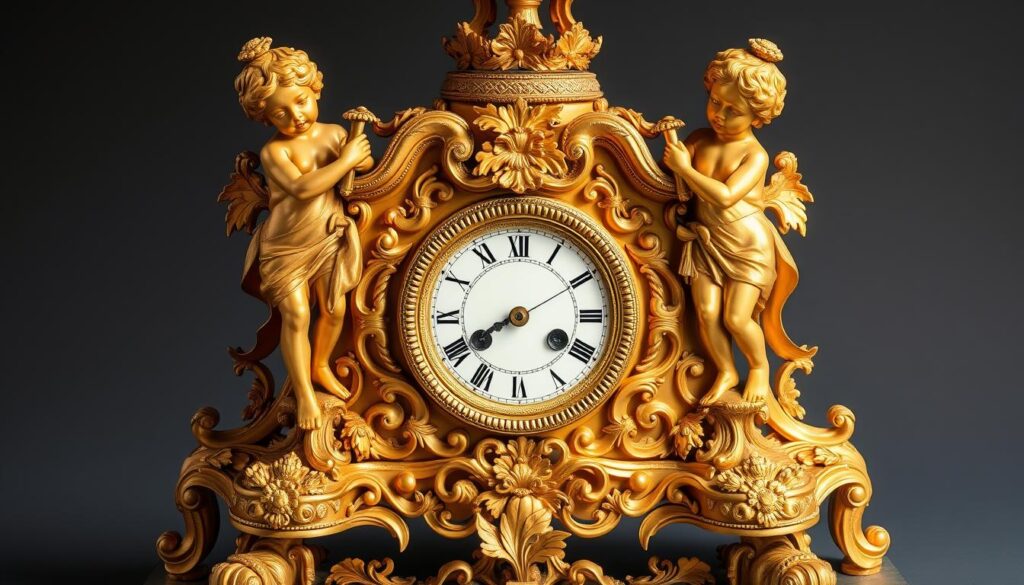
You can appreciate the beauty of the 19th century through the French Louis XVI-Style Ormolu Striking Mantel Clock, a clock that showcases exceptional decorative arts. This exquisite timepiece is characterized by its intricate craftsmanship, making it a valuable addition to any antique collection.
Rococo Design Elements
The French Louis XVI-Style Ormolu Striking Mantel Clock features Rococo design elements, including an ornate cast case with floral mounts and cherubic putti figures. These elements not only add to the clock’s aesthetic appeal but also reflect the luxurious style of the era.
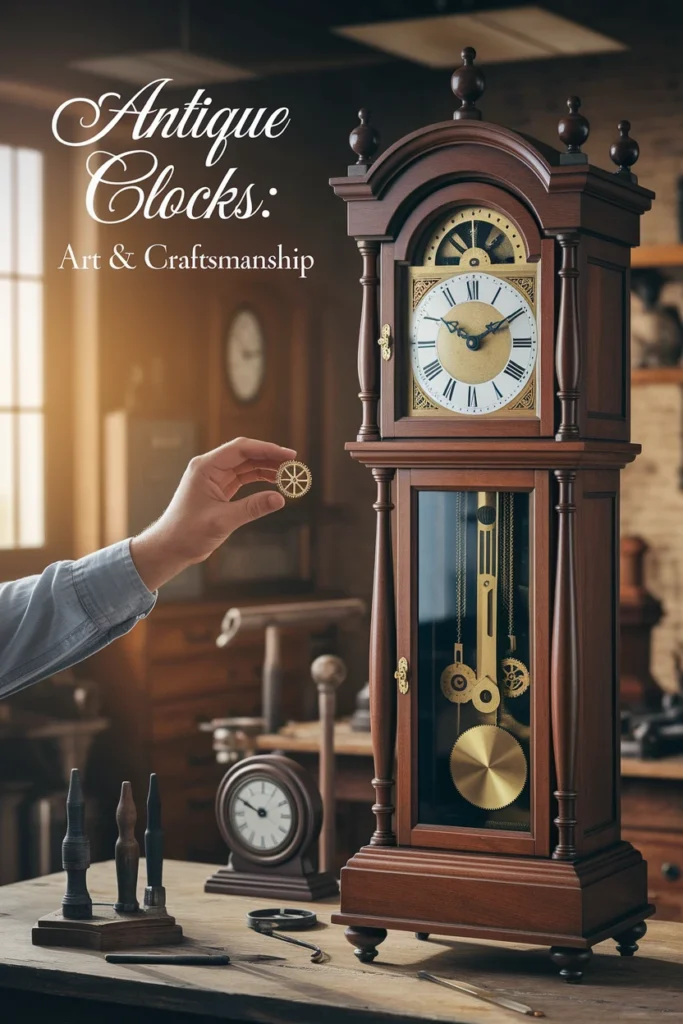
Collectibility Factors
When considering the collectibility of this mantel clock, several factors come into play. The clock’s condition, rarity, and historical significance are crucial in determining its value. Additionally, the clock’s striking mechanism, which chimes on the hour, adds to its allure and desirability among collectors.
The French Louis XVI-Style Ormolu Striking Mantel Clock is valued at approximately $5,300, reflecting its status as a masterpiece of 19th-century decorative arts. To understand its value, it’s essential to appreciate the gilt bronze technique, known as “ormolu,” that gives this mantel clock its distinctive golden appearance and luxurious appeal.
The clock face is another aspect that makes this timepiece stand out. With its pristine white enamel dial, elegant ormolu hands, and distinctive royal blue chapter markers, it embodies the elegance of the style. French mantel clocks from this period are particularly sought after by collectors and interior designers alike, making this clock a valuable find.
Hermle Longcase Clock
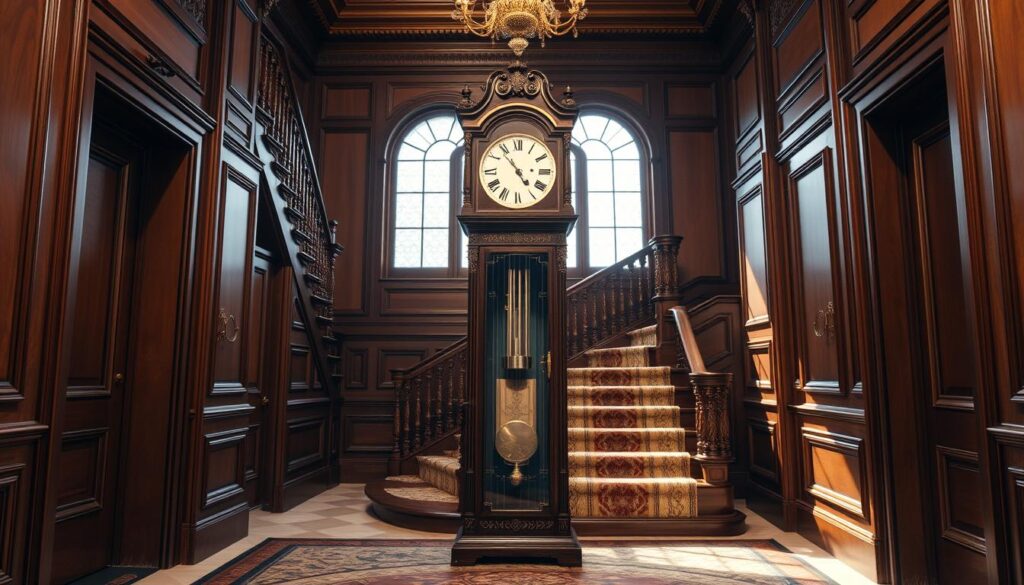
The Hermle Longcase Clock stands as a testament to traditional timekeeping, echoing memories of the past. For you, it might evoke memories of classic clocks seen in your favorite films or bring back heart-warming memories of your grandparents’ home, where the longcase clock stood proudly in the hallway.
This clock is not just a time-telling device; it’s a piece of history, crafted with precision and care. The Hermle longcase clock is made from walnut with real wood inlays, making it truly one of its kind.
The Tradition of Longcase Clockmaking
Longcase clockmaking has a rich tradition that dates back to the late 17th century. Makers like Hermle have continued this legacy, bringing precision and quality craftsmanship to the forefront. You can appreciate the intricate details and the skill that goes into creating these timepieces, which have become iconic symbols in many homes.
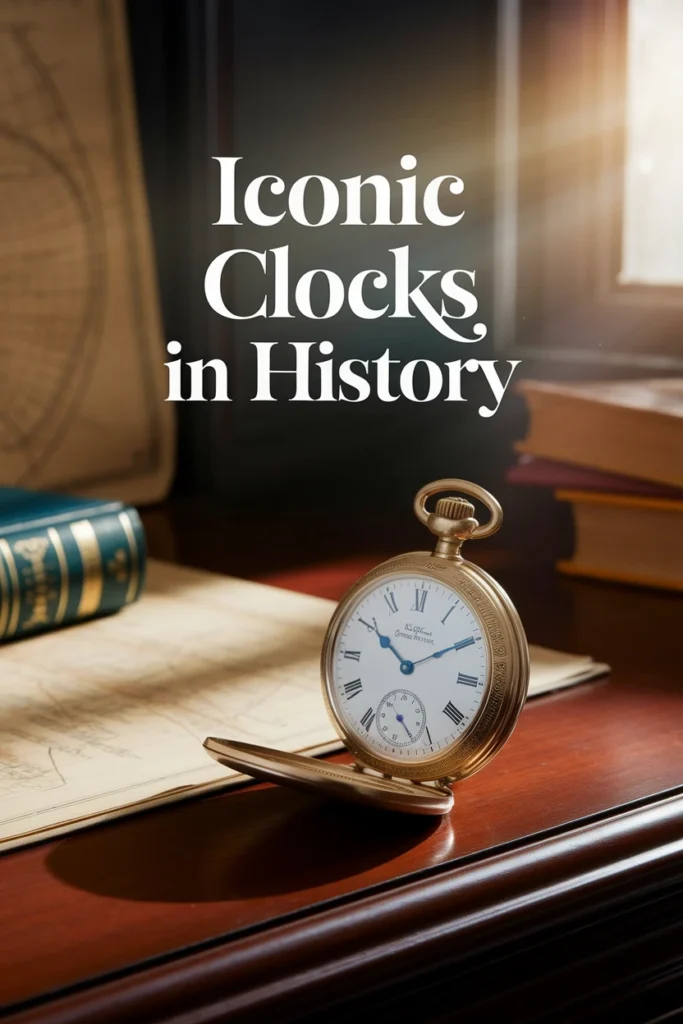
Identifying Authentic Hermle Pieces
To identify authentic Hermle pieces, look for distinctive maker’s marks, movement characteristics, and construction techniques. Hermle clocks are known for their precision engineering and exceptional woodworking skills, particularly in the case, which is often crafted from walnut with intricate wood inlays. You can learn to appreciate these details, ensuring that you’re getting a genuine Hermle longcase clock for your home.
English Fusee Dial Clock
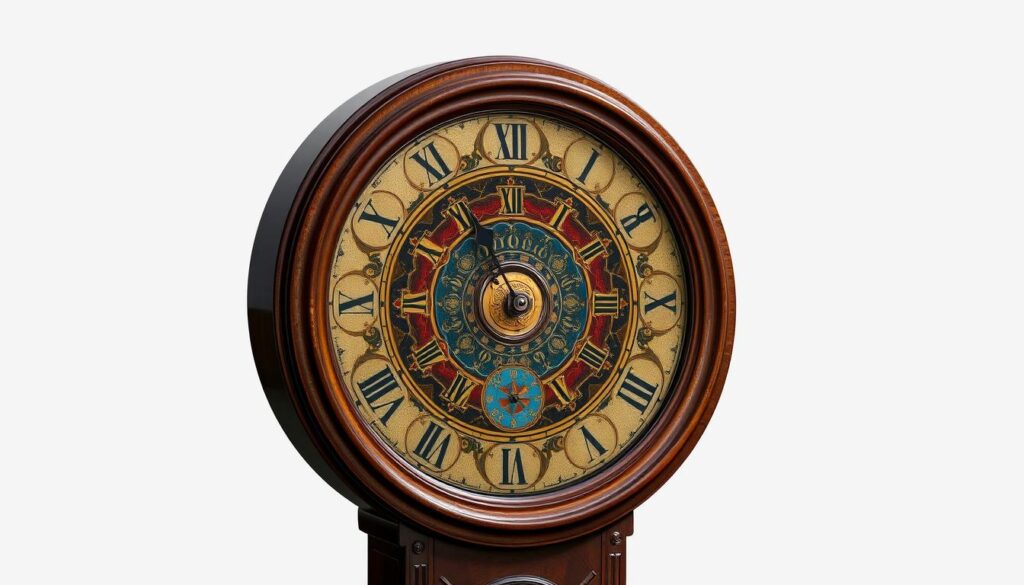
You can appreciate the intricate details of the English Fusee Dial Clock, a relic from the 17th century. This antique clock is renowned for its precision and ornate design.
The Fusee Mechanism Explained
The fusee mechanism is a conical pulley system with a chain that equalizes the force of the unwinding spring, thus enhancing the clock’s accuracy. This innovative mechanism is what gives the English Fusee Dial Clock its name and historical significance.
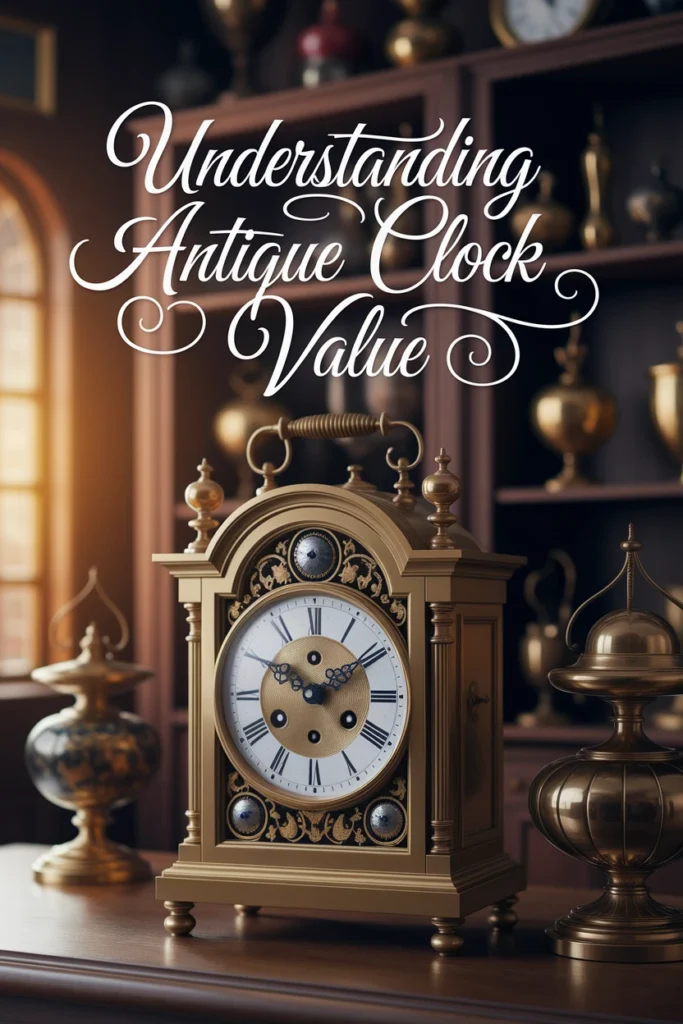
Decorative Elements and Variations
The dial face of these clocks is often adorned with vibrant colors, including red, blue, and gold, making them not just timekeeping devices but also decorative pieces. The brass components and mahogany case construction add to their ornate appeal, while the visible pendulum feature through glass panels enhances their aesthetic value.
Girandole Wall Timepiece by Lemuel Curtis
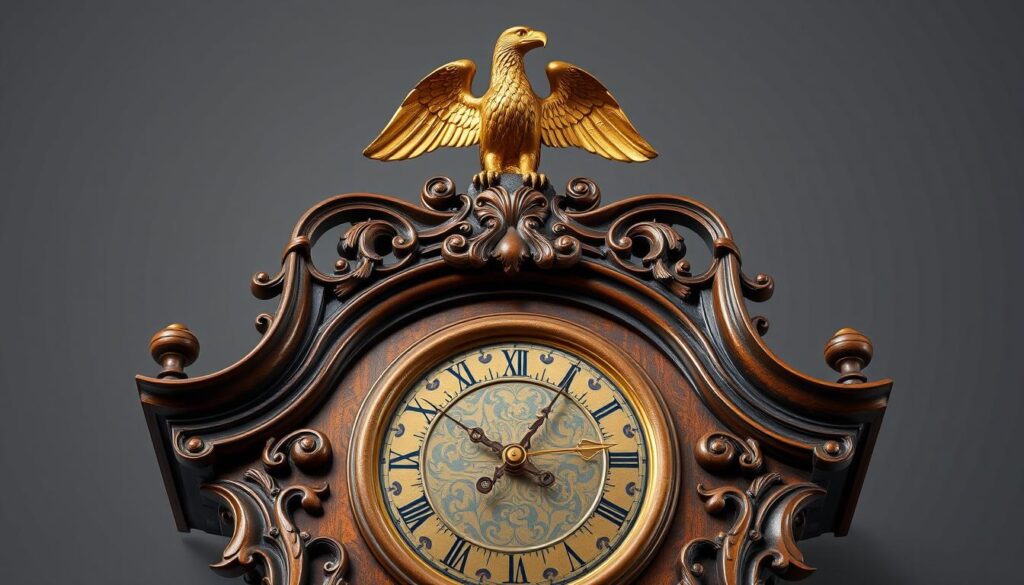
The Girandole Wall Timepiece by Lemuel Curtis represents the pinnacle of early American horology. Crafted in the early 19th century, this antique wall clock is a testament to Curtis’s skill as a clockmaker. As an apprentice of the Willard family in Boston, Curtis developed a distinctive style that blended traditional techniques with innovative designs.
The Girandole design is characterized by its round face surrounded by ornate convex glass and topped with an iconic golden eagle finial. The clock features intricate carvings and moldings, showcasing the exceptional craftsmanship that went into its creation. The painted metal dial with Arabic numerals is a hallmark of Curtis’s work, helping to distinguish authentic pieces.
The Willard School Influence
Lemuel Curtis’s apprenticeship with the Willard family significantly influenced his work. The Willard School was renowned for its clockmaking techniques, and Curtis incorporated these skills into his own designs. However, he also introduced unique elements that set his timepieces apart, such as the use of intricate carvings on the Girandole Wall Timepiece.
Identifying Authentic Curtis Pieces
To identify authentic Girandole Wall Timepieces by Lemuel Curtis, look for the distinctive painted metal dial with Arabic numerals and the golden eagle finial. The quality of the carvings and moldings is also a key indicator of an authentic Curtis clock. These features, combined with the clock’s weight-powered movement, make the Girandole Wall Timepiece a highly sought-after antique wall clock.
Cartier’s Flamingo & Lotus Automation Clock

You might be surprised to learn that Cartier’s Flamingo & Lotus Automation Clock, despite being created in the 1980s, is considered a rare antique collectible due to its exceptional craftsmanship and art deco design.
This timepiece features a handcrafted flamingo and lotus flower adorned with diamonds totaling 190 carats, contributing to its $1.2 million price tag. The clock’s base is made of 18k gold, set with onyx and grey mottled hardstone, exemplifying Cartier’s commitment to using only the finest materials.
The Precious Gemstone Details
The Flamingo & Lotus Automation Clock boasts an impressive array of gemstones, including diamonds that adorn the handcrafted flamingo and lotus flower. This opulent decoration not only enhances the clock’s beauty but also its value.
Automation Features
The clock’s automation features are activated by four eye-catching lapis lazuli buttons, allowing the lotus flower to open and reveal the clock dial, and the flamingo to articulate. This innovative mechanism showcases Cartier’s blend of traditional craftsmanship with modern technology.
Japanese Single Foliot Kak Dokei
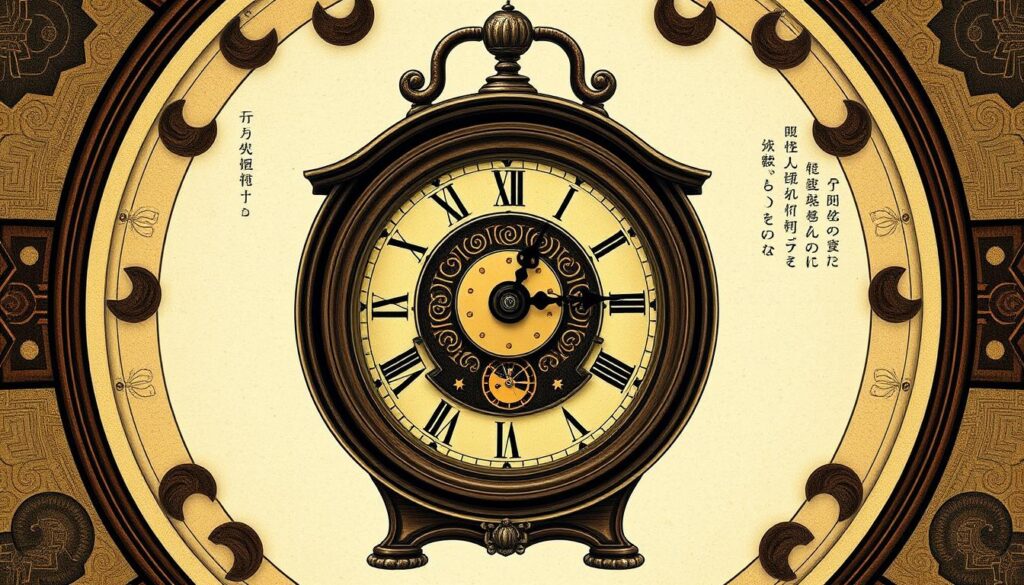
This 19th-century Japanese clock, known as the Single Foliot Kak Dokei, represents a fascinating fusion of Eastern and Western horological traditions. The rare antique timepiece is a product of Japan’s innovative approach to timekeeping, blending Western mechanical clock technology with the country’s traditional 16th-century timekeeping system.
The design of this clock is lantern-inspired, reflecting the concept of “timekeeping in context.” It was created to adapt Western technology to suit Japanese cultural needs, rather than simply importing foreign concepts unchanged. The Single Foliot Kak Dokei is a testament to Japan’s ability to innovate and integrate different horological traditions.
Eastern Timekeeping Traditions
The Single Foliot Kak Dokei was influenced by Eastern timekeeping traditions, including Japan’s traditional variable hour system. This system divided daylight and darkness into six equal parts, regardless of the season, showcasing a unique approach to time regulation.
Cultural Significance
In Edo period Japan, clocks like the Single Foliot Kak Dokei served both practical and status functions. These rare antique timepieces are highly valued by collectors for their cultural significance and the insight they provide into cross-cultural technological adaptations and horological history. As a timepiece, it represents a significant milestone in the evolution of Japanese clockmaking.
Patek Philippe’s Magpie’s Treasure Nest
Among the most exquisite timepieces created by Patek Philippe is the Magpie’s Treasure Nest, a true marvel of craftsmanship. This rare antique clock is a testament to the brand’s commitment to horological artistry, featuring a magpie feeding her young, rendered in precious metals and gemstones.
The Magpie’s Treasure Nest is not only a beautiful piece but also a highly valuable one, commanding a price of $2.3 million. Its art deco influences are evident in its design, making it a unique piece that blends functionality with luxury.
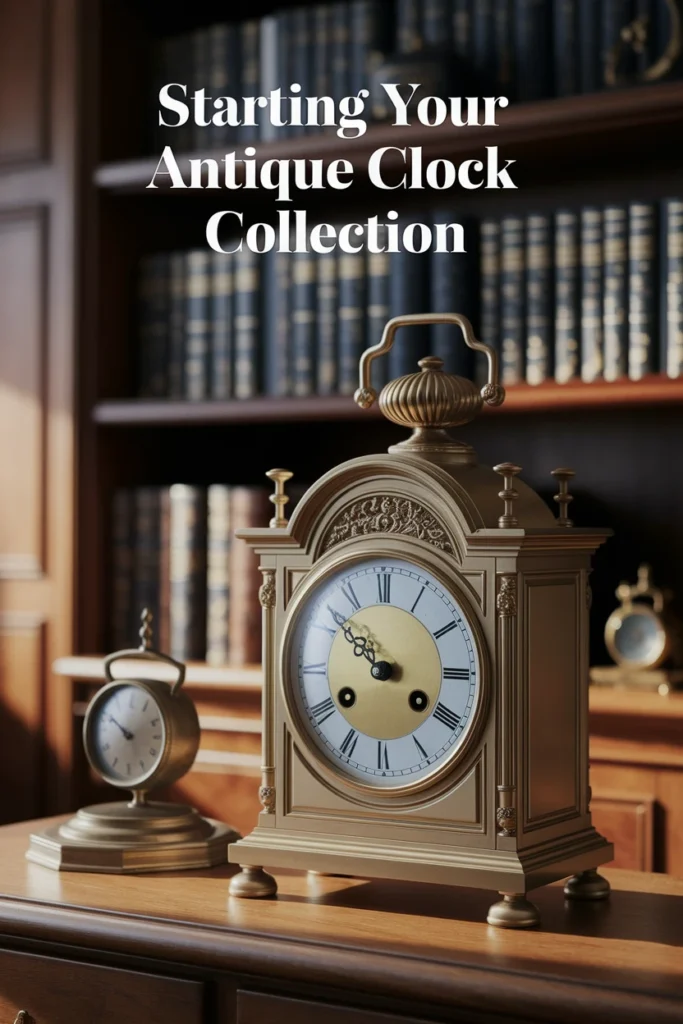
The Gemstone Artistry
The Magpie’s Treasure Nest is adorned with an impressive array of gemstones, including 24.95 carats of diamonds and 13.7 carats of rubies. The centerpiece is a stunning 104.75-carat blue tanzanite held in the mother bird’s mouth, showcasing the exceptional gemstone artistry of Patek Philippe.
This level of craftsmanship is what sets Patek Philippe apart as a leader in luxury watchmaking, with their clocks representing the pinnacle of horological art.
Limited Availability and Market Value
Patek Philippe’s Magpie’s Treasure Nest is produced in extremely limited numbers, making it an instant collector’s item. The gold and precious stones used in its construction not only add to its beauty but also to its investment potential.
As with other rare antique pieces, the value of the Magpie’s Treasure Nest is expected to appreciate over time, making it a valuable addition to any collection. Its art deco style ensures it remains a timeless piece, coveted by collectors and connoisseurs alike.
How to Start Your Own Antique Clock Collection
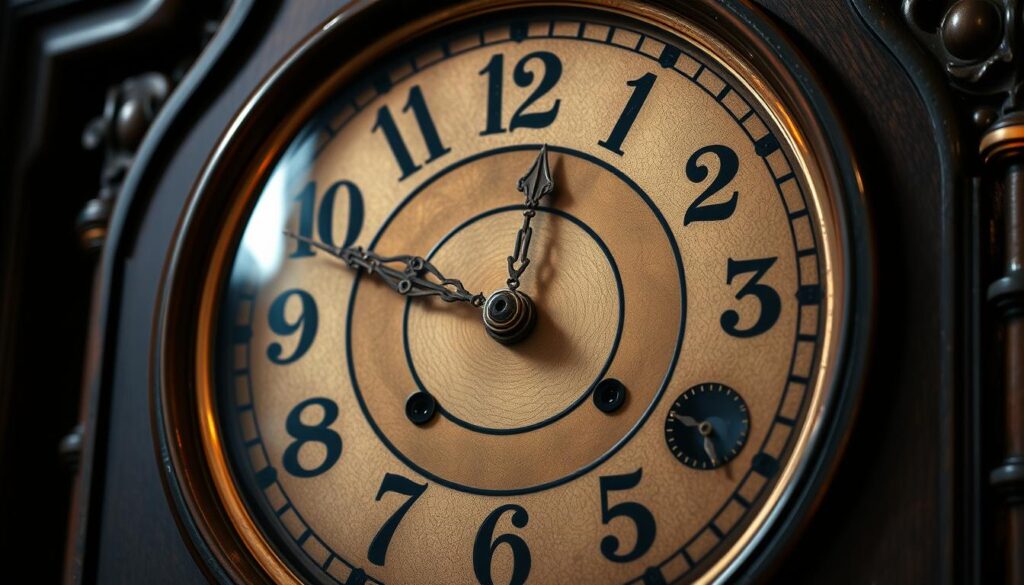
Starting an antique clock collection requires a blend of passion, knowledge, and strategy. As a novice collector, it’s essential to begin with thorough research and education on antique clocks.
Specializing in a particular type, period, or maker can help you build a cohesive and valuable collection. Utilize reference books, online forums, and reputable dealers who specialize in antique clocks to gain insights.
Setting a realistic budget is crucial. Strategies for finding quality pieces at various price points include attending auctions and joining clock collector associations, which can connect you with experienced collectors.
When building your collection, prioritize condition and authenticity to ensure your pieces appreciate over time. Proper documentation, including provenance and condition reports, is also vital.
Balancing passion and investment is key. Successful collectors often combine both approaches, making informed decisions that enhance their collection’s value.
Caring for Rare Antique Clocks
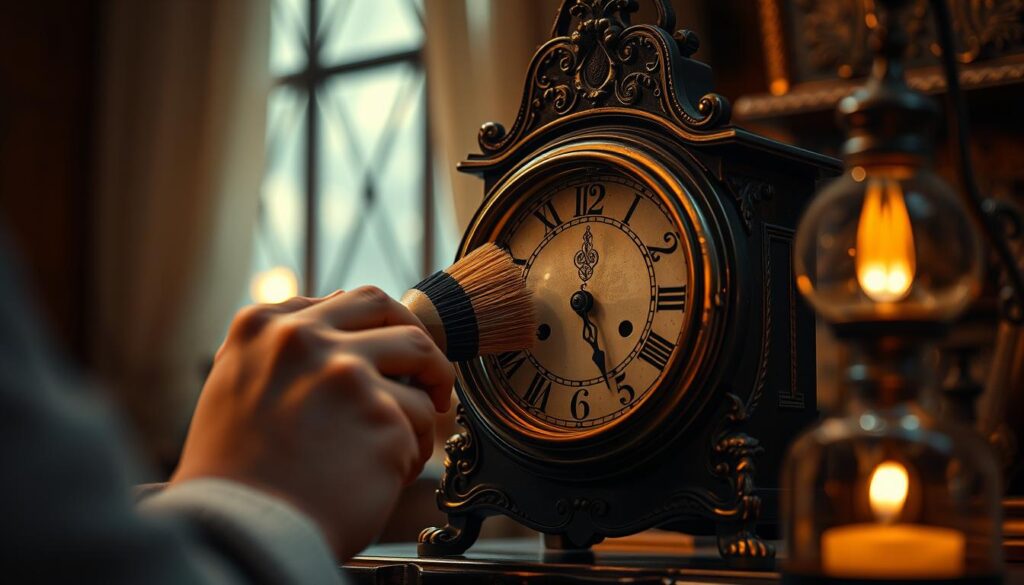
Preserving the beauty and functionality of your antique clock involves understanding its specific maintenance needs. Proper care ensures that your timepiece continues to keep accurate time and remains a valuable piece for generations to come.
First, it’s essential to position your antique clock away from direct sunlight, humidity, and temperature fluctuations, which can damage its delicate mechanisms. Understanding the correct winding techniques for your clock is also crucial to prevent damage to the movement.
Regular cleaning is necessary, but it must be done carefully. Use appropriate cleaning materials that won’t harm the delicate finishes of your antique clocks. It’s also important to know when to seek professional servicing to maintain the clock’s accuracy and longevity.
If you need to move your clock, use proper transportation methods to prevent damage to the internal mechanisms. Finally, consider appropriate insurance options for your valuable antique clock and document it properly for insurance purposes.
Conclusion
Our exploration of the top 10 rare antique clocks has revealed the extraordinary craftsmanship and artistry that defines these exceptional timepieces. You can now appreciate how these clocks represent not just functional objects but important artifacts of human ingenuity and artistic expression.
As you consider starting or adding to your collection, remember that each rare antique piece has its own unique story and historical significance. Investing in a quality antique clock is not just a purchase, but an acquisition of a piece of history that can be passed down through generations.
FAQ
What determines the value of an antique mantel clock?
The value is determined by factors such as its age, condition, rarity, and demand. A clock’s brass or gold components, intricate carvings, and art deco style can also impact its worth.
How do I know if my antique clock is genuine?
To verify authenticity, examine the clock’s movement, dial, and case for signs of aging and wear. Research the maker and style to understand its origins, and consider consulting a professional horologist or appraiser.
What is the significance of a clock’s century of origin?
A clock’s century of origin can greatly impact its value and historical significance. For example, a 19th-century clock may be more valuable due to its age and the craftsmanship of that era.
How often should I maintain my antique clock?
Regular maintenance is crucial to keep your antique clock in good working condition. It’s recommended to have a professional horologist inspect and service your clock every 5-10 years, depending on its condition and usage.
Can I display my antique clock in a humid environment?
No, it’s not recommended to display your antique clock in a humid environment, as moisture can damage the wood, metal, or other materials. Keep it in a dry, stable environment to preserve its condition.
Are antique clocks a good investment?
Antique clocks can be a good investment if you choose a rare and valuable piece, and if you’re willing to hold onto it for a long time. Research the market, and consider consulting with experts before making a purchase.
How do I store my antique clock when not in use?
When storing your antique clock, keep it in a cool, dry place, away from direct sunlight. Wrap it carefully to prevent damage, and consider storing it in its original box or case.
